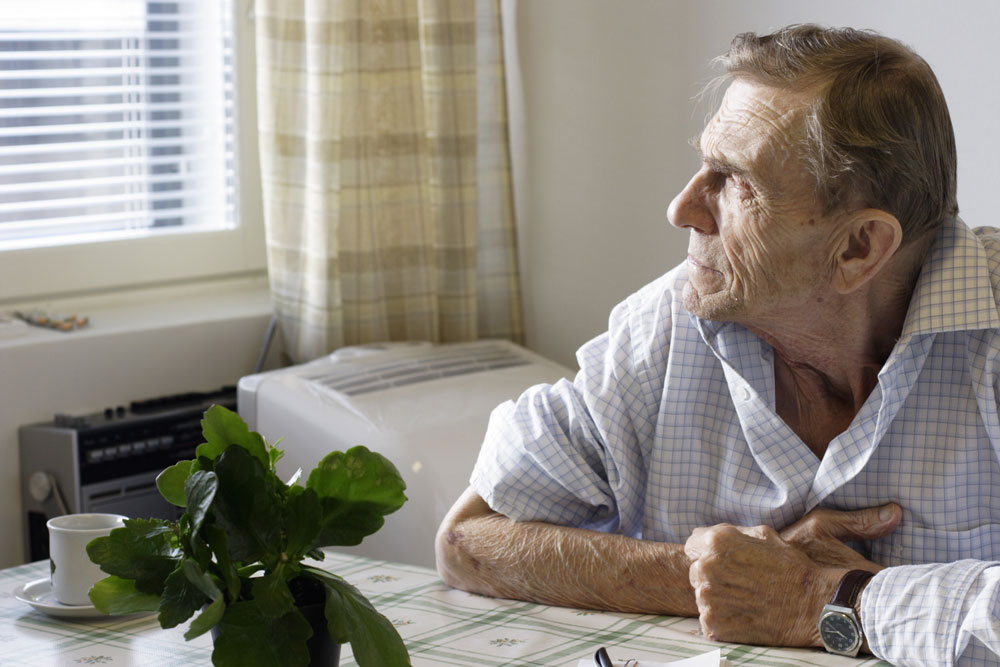Leadership, team and individual
This article is written from the perspective of Swedish conditions. Hopefully, it can inspire those interested from other countries.
We are in a transitional period where "New Public Management", which involves results-based management with the aim of increasing efficiency, is increasingly being questioned and "Trust-based management and governance" is emerging as an alternative. The value base must guide the development work.
 Foto: Mostphotos
Foto: MostphotosA manager who felt hunted by both employees and residents and their relatives established a routine where the manager walked around all floors three times a day. This meant that simple problems could be solved directly and that the manager could spend the rest of the time in peace and quiet planning the business. There were problems with deliveries, substitutes who did not really understand the assignment, dealing with relatives, and all kinds of possible and impossible questions.
In addition, it gave the manager an opportunity to see the business and how it worked. It provided an opportunity to ask questions. Questions that made the employees think. By showing interest and listening as a manager, you create a value base and are a role model for how employees should act towards each other and in relation to the residents.
A care home should have a clear value base with well-anchored routines and ways of working. This gives all employees a safe role. By being available, pleasant, attentive, stopping and answering questions, many misunderstandings can be avoided.
Efficiency in elderly care
There is occasional talk of making elderly care more efficient. The setup for a more efficient elderly care varies depending on whether the starting point is to save money or to create more time for the residents. Efficiency can also occur at a societal level. This means that the elderly can stay in their homes and live an independent life with limited support services.
The starting point for the efficiency that takes place today is often to save money for taxpayers or increase profits. Often, operations are cut "with a cheese slicer". Elderly care requires extensive knowledge among the employees to meet the residents' needs. When time for reporting and training is removed, the conditions for development, management, and control are slowly but surely undermined.
There is a risk with having too much focus on cost. Making changes that lower the quality often ultimately results in higher costs. For a care home, this can mean more hospital admissions, increased staff turnover, increased number of complaints, and time-consuming investigations of Lex Sarah and Lex Maria. There is also suffering for residents and relatives.
Measuring the cost of a care home is therefore not easy. There is no direct correlation between cost and quality. There are care homes that deliver high quality care with low costs, just as there are care homes with high costs and poor quality. Anyone who only considers costs and does not simultaneously work with the quality of the business risks making serious mistakes. All business changes must be preceded by a thorough risk analysis of what it looks like and why.
Success Factors
One way to work with business development is to compare yourself with others. Units can learn from each other to find ways to work smarter. One way to improve quality and save time in the long run is to work function-preserving. Likewise, good fall prevention work is a way to avoid fractures and other health injuries. By comparing yourself with others, the business can get inspired to raise its own level of ambition. In a municipality, you can work to improve the elderly's eating habits or other fall prevention measures and in this way contribute to the residents having more healthy years.
Leadership with a clear vision can often find ways to improve quality with existing resources. Quality is created by the employees in the meeting with the residents and their relatives. Clear and ambitious leadership with a clear vision often creates job satisfaction and commitment among employees who want to be able to feel proud of their workplace. Aiming to be the best is in the nature of good leadership.
Businesses that have poor results need to do a thorough analysis of what is holding down the business. Above all in larger cities, care homes will notice a hardening competition for the elderly. If there is a surplus of living places, the elderly and their relatives will choose the care home that has the best reputation and range.
The absolute largest cost in elderly care is the staff. If they do not enjoy and engage in the business, the quality drops while costs increase. The change can go quickly. Better quality in elderly care means a "win-win" where it gets better for the residents and their relatives while making the work more meaningful.
Leadership is the most important aspect when it comes to building quality in elderly care. Safety culture is about both care and the work environment being safe. It must be allowed to dare to talk about risks and what is difficult or can go wrong. The business must not look for scapegoats, but rather praise and stimulate reporting of deviations.
Nursing assistants are expected to always make wise decisions in the meeting with the residents and relatives. The work is so complex that it is not possible to have routines for everything that can happen. All employees must have good self-leadership, i.e. the ability to make good decisions and take wise actions in the moment. Together we can strengthen the leadership.
Managers and leaders in healthcare have a crucial responsibility to create a good safety culture and carry the organizational culture. Their knowledge, attitude, action, and decisions are crucial. They have a significant role in influencing safety behaviors. The National Board of Health and Welfare has in a publication pointed out what they see as essential success factors for leadership in healthcare.
Safety culture is created by:
• making sure that healthcare personnel are involved
• actively listening when healthcare personnel have opinions on safety
• showing appreciation when work is carried out safely
• being clear about which behaviors are tolerated and which are not
• having good problem-solving ability
• communicating effectively
• being respectful
• showing personal commitment and humility for the issues
• have an overview of the health and medical care system and know how it works; what benefits safety and in which situations it can fail.
• In everyday work, managers and leaders must create conditions for safety work and its development
• contribute to the introduction of good principles and working methods for safety
Safety must be in focus all the time. Everyone must follow the routines, be risk aware and report risks through deviation reports. By having meeting forms where everyone can contribute to seeing risks and finding solutions, a good safety culture is created. Employees who feel good and enjoy the work contribute greatly.
Teamwork
Teamwork is a prerequisite for high patient safety and everyone in the team contributes with their specific competence. Cooperation both close to the patient and higher up in the organization is fundamental. A positive conversation climate and knowledge about the impact of group dynamics on decision-making are important. A method that supports in the daily work is short check-ins before, during, and after a task or a working day.
All employees have a personal responsibility to contribute to safe care. When social services and health and medical care work as planned, the opportunities for each individual to contribute to a good result increase. Managers and leaders have a responsibility to capture what is happening in the daily work in close communication and cooperation with healthcare personnel.
It is particularly important that everyone reports deviations and adjustments in the work to create safe care. This reporting increases the opportunities to work preventively and learn from different events. Everyone has a responsibility to help their colleagues do the right thing to thereby reduce healthcare injuries.
Everyone who works in care has a responsibility to lead themselves and others so that it benefits those who are dependent on the care and care provided. It is important not to problematize too much. Often there are measures that are easy to implement in the short term. Solving big problems in small steps prevents the business from getting stuck in excuses for doing nothing.
Reflection - leadership, team, and individual
Care staff:
• Do you provide the residents with good quality care?
• Is there clear leadership?
• How do you show leadership, for example, when introducing colleagues or when a new resident moves in?
Manager, nurse, occupational therapist, and physiotherapist:
• Do you have a clear vision for the development of the unit?
• How does your quality compare to other care homes?
• Do you have a common view of leadership?
Residents and relatives:
• Do you experience the employees as proud and secure?
• Do you feel that the business has good leadership?
• Are there good conditions for offering care of good quality?
Erland Olsson
Specialist Nurse
Sofrosyne
Quality in elderly care

Aktuellt i media
- 2026-01-19 04:12 14 Läkemedelshantering
-
2026-01-08 04:00
13 Hygien
By changing work clothes at least once a day, the risk of spreading infection decreases.
info Foto: Mostphotos
Foto: Mostphotos - 2025-12-29 04:00 08 Förebyggande o lokaler
-
2025-12-18 04:00
16 Sjukdom och död
Survivor conversations - an important element in working with next of kin
info Bild från Summer Stock
Bild från Summer Stock - 2025-12-15 04:00 17 Psykisk hälsa
- 2025-12-11 04:00 07 Riskhantering





